Flexi time calculation
At the following pages the flexitime calculation will be described. Also it will be shown how the calculation can be corrected, if needed.
Showing the current month data
In the current month, the working time, the overtime and the remaining leave will be shown in a separate information window. This window is placed in the middle of the TimePunch Window at the lower border.
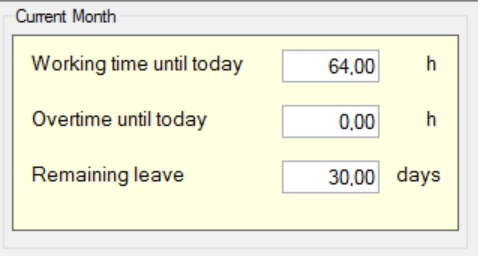 The working time will be displayed up to the current date. That is also true for the cumulated overtime. It’s important to know that the displayed overtime includes the working time of the current day.
The working time will be displayed up to the current date. That is also true for the cumulated overtime. It’s important to know that the displayed overtime includes the working time of the current day.
Analyzing the overtime in the current month
The overtime per user can be displayed in the analyze window (lower right). At this place the overtime at the beginning of the month, the overtime within the month and the overtime at the end of the month will be displayed.
If a correction took place in form of overtime payment or overtime restriction, the original overtime and also the corrected overtime will be displayed.
Manage the flexi time account
Additionally, to the applied overtime rules of the given user Profile can be amended in every month separately. Using the button “extended” the overtime can be amended.
Overtime compensation with the working time contract
If the employment contract contains an overtime compensation, it can be defined by each month separately.
 An overtime compensation means that the overtime is counted only from a certain number of hours as overtime work. Below this threshold, the overtime is compensated by the employment contract.
An overtime compensation means that the overtime is counted only from a certain number of hours as overtime work. Below this threshold, the overtime is compensated by the employment contract.
Note: Exception for negative balance
A special case occurs when employees slip into the minus with their flexitime account. In this case, the rule "Overtime gets counted from" will be ignored. If the exception is activated, employees can balance their working time account more quickly because overtime is credited directly to the account.
Overtime limitation
To set an overtime limit, at the selection list “overtime limitation” the corresponding list entry needs to be chosen.
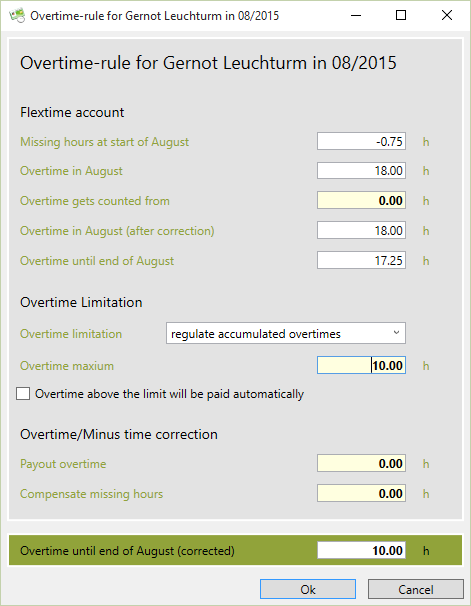
On request, the overtime can be limited per month or a total. This can be done with the second selection:
“Regulate accumulated overtimes” means that the employee can only have a limited overtime in total.
“Regulate monthly times only” means that the employee can only have a limited amount of overtime in month, but in total unlimited.
Overtime gets paid automatically
Overtime can be paid automatically, if overtime exceeds the set maximum number of overtime. This is to select the checkbox of the entry "Overtime above the limit will be paid automatically".
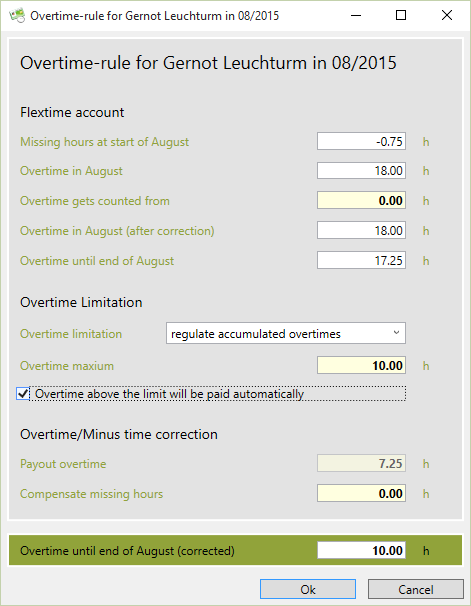
Important: Overtime can only pay out automatically, if an overtime limitation has been set in order to calculate the difference to it.
Pay-out overtime once and manually
Overtime can be paid out manually, by entering the overtime to be paid out in the field “Payout overtime”. Similarly, for compensating missing hours. One only has to enter the missing hours to compensate into the corresponding field.

When overtime is paid, the tooltip also displays the month in which the employee incurred the paid overtime hours.
Overtime compensation
The flexi time calculation in TimePunch interprets missing entries as taken-overtime. Seeing that adding an entry for overtime compensation is not necessary.
But for the clarity, adding entries for the compensated overtime is a good advice. Also in this case it’s recommended to create an entry series.
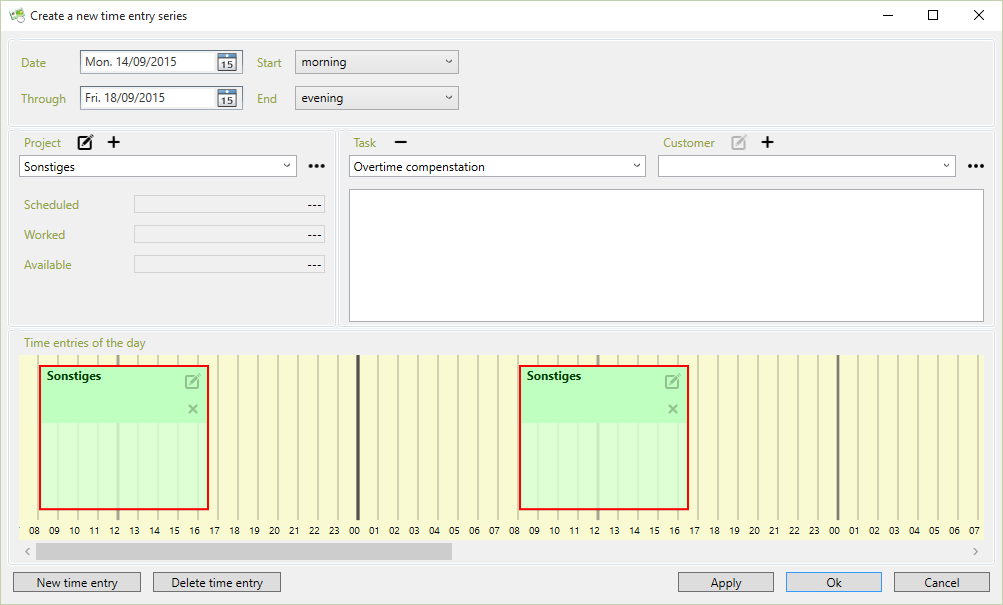
Core working times
Core working times are defined working times during which the employee must be present. In general, core times are optional, i.e. not mandatory.
The start of core working time can also be set independently of the end of core working time. Of course, the reverse is also true.
Set core working times for all employees
In TimePunch, core working times can optionally be defined. This can be done individually per employee and working time model or globally for all employees.
To do this, select the menu item "Extras / Set core times globally ...".
The following dialogue opens.

By confirming the entered core working times via the "OK" button, the entered core working times are set in all working time models of the employees.
Set core working times individually
An individual core working time can be defined for each employee via their working time model.

Check core working times
The violation of core working time can be checked by means of a report provided for this purpose. The corresponding report can be found in the menu item "Reports / Flexitime reports / Core time violation".
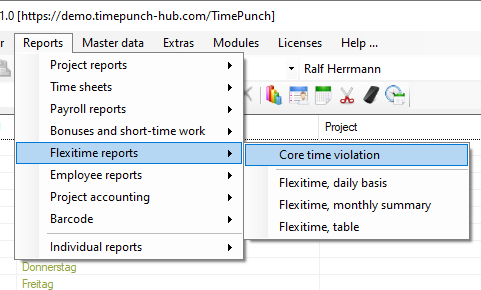
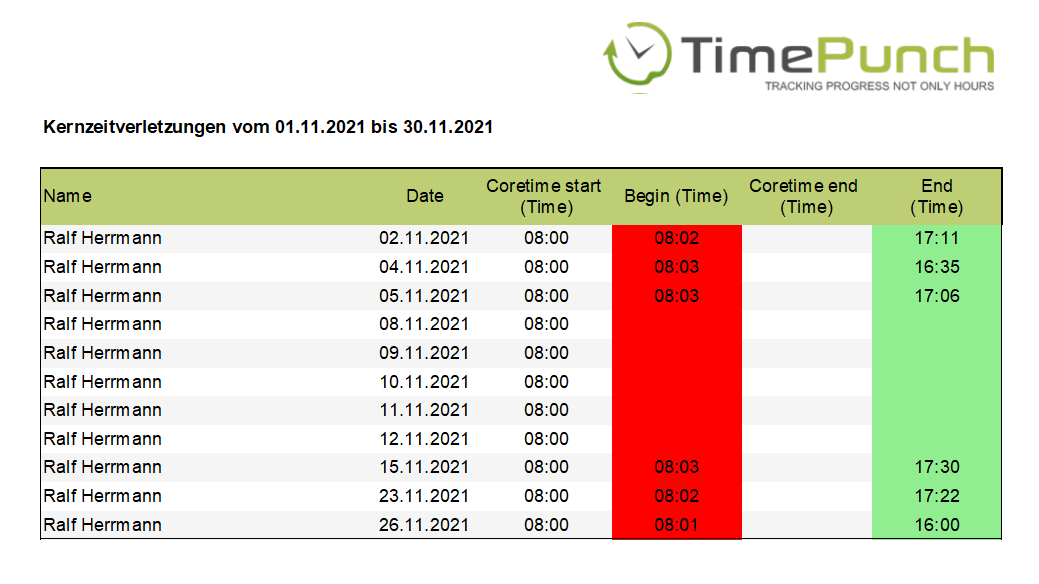
Monitor core working times
TimePunch offers an integrated service for monitoring core working hours. The settings for this are stored in the options.
These can be found under the menu item "Extras / Options".
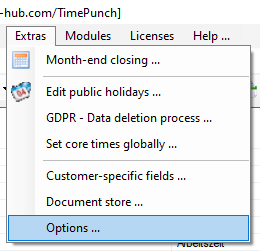
And then find "Automated Mails".
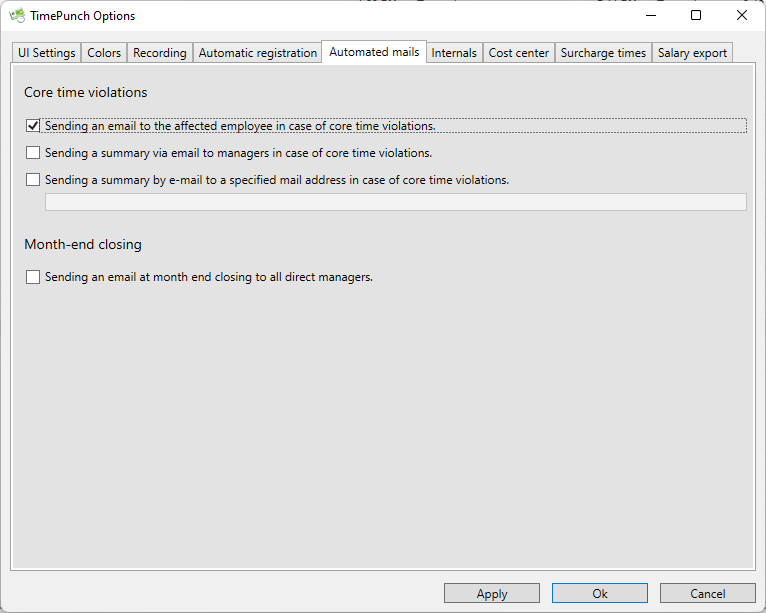
Of course, it is important that the employees are assigned corresponding e-mail addresses in the employee profile.
Sending an e-mail in case of core time violations to the employee concerned
If this option is activated, then an e-mail is sent to the corresponding employees in the event of a core time violation.
This happens 5 minutes after the start of core time and 4 hours after the end of core time. The time after the end of core time is defined as 4 hours, as TimePunch cannot yet assess whether the employee is currently on break or has already gone home.
Senden einer Zusammenfassung per E-Mail die Führungskräfte
If this option is activated, the employee's direct HR manager receives an email with the core time violation.
It is important that the manager (team, department or branch) has personnel manager rights. A staff member without this right will not receive any information, even if he or she is registered as the manager of the staff member who is in breach of core time.
Sending a summary by e-mail a specific mail address
With this option, the core time violations (independent of the manager) can be sent to a defined mail address.